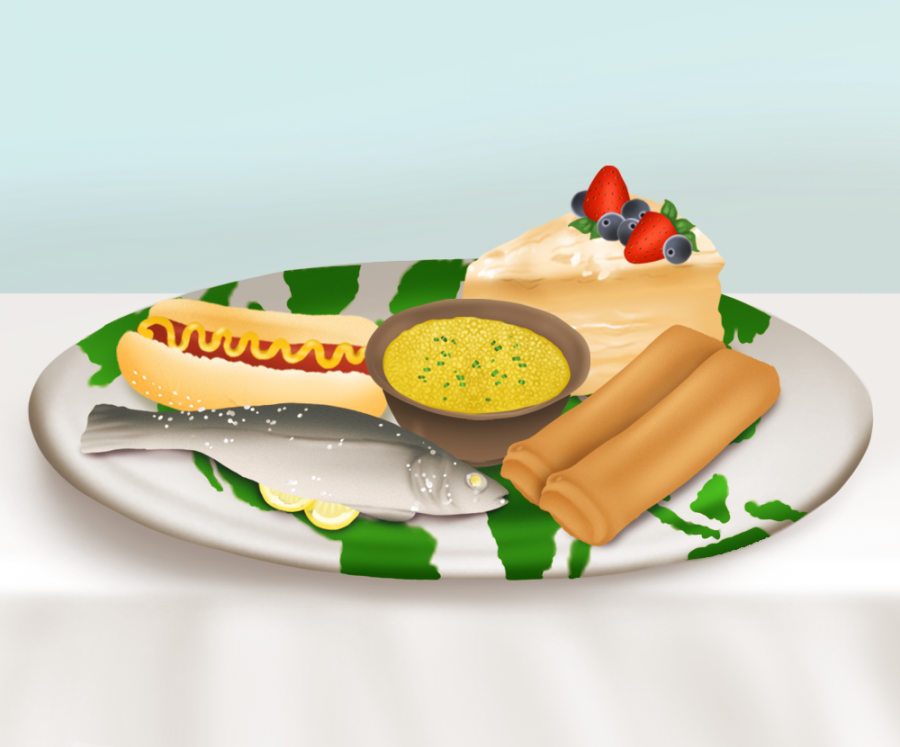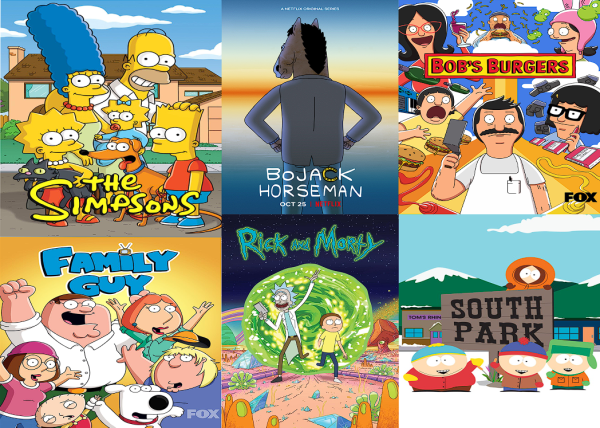Food for thought
photo by Bethany Barker
Food is more than just a form of energy, it unites people across the globe.
Whether it is a pierogi from Poland, dim sum from China, empanadas from South America, gyoza from Japan, or even Italian raviolis, there is one thing every region of the world has in common: they all have their own form of a dumpling. Like the dumpling, food represents a connection between people.
“Food is an element that is generally reliable, comforting and something that makes you feel good if you do it right,” senior Natasha Nilsen said, “It plays a role in how my day is gonna go because that’s my fuel and it can uplift my mood as well.”
Born in Russia, Nilsen was raised by Russian and Danish parents who made sure food was an important part of her life. Nilsen’s favorite dish growing up in Russia was a pork roast with brown sauce, purple cabbage, boiled potatoes, chips and a special pink sauce.
“Every single time I think about it I just remember those nights where we would celebrate Christmas or New Year’s while eating it and we would all be safe, at home, warm, and celebrating with family, friends and people we care about,” Nilsen said.
Nilsen moved to America just four years ago, and has grown to miss a lot of food she once enjoyed. One of her favorite Russian foods is Tvorog, a dairy product only sold in Russia. It has the texture of dairy right before it becomes cheese; the simple milky taste mixes perfectly with a little bit of sugar, honey and milk.
Nilsen continues her dinner table traditions, even now, when she is miles away from Russia. Whether it is eating food a certain way or speaking Russian sayings over the food, these customs bring Nilsen a sense of familiarity.
“For us it is a part of our identity, a piece of our culture and home, our history in a foreign country where our culture is not popular whatsoever,” Nilsen said.
Junior Olivia Tulloch also finds cultural importance in the food she cooks and eats at home. Her Jamaican and Guyanese background has largely contributed to her cultural identity in the US.
Tulloch associates both good and bad memories with food; it served as a connection to her heritage and family, but also as a source of embarrassment in her younger years.
“I didn’t like to draw attention to my different ethnic background, especially when it came to food,” Tulloch said, “ So when I would take out my lunch box filled with beef curry, saltfish cakes, or anything that wasn’t the standard PB&J norm for my private elementary school, I was ashamed of it.”
Now, due to COVID-19 Tulloch has not been able to see her extended family regularly, which has actually caused her to miss the foods she was once embarrassed of – especially her grandmother’s saltfish cakes. Saltfish cakes, or sometimes referred to as “stamp and go,” are traditional Jamaican saltfish fritters.
“When she makes them for breakfast, the smell fills up the whole house and it’s one of the best things ever,” Tulloch said.
Recipes and dishes passed down for generations hold much significance for many students looking to be more involved with their culture. Senior Annica Nguyen’s grandmother is known for her eggrolls. These eggrolls are requested at every birthday party, graduation and wedding, and guests can expect to take a plate piled high of them back home. It is a recipe that has been in the family for years, and is kept top secret. So when Nguyen’s grandma asked her to help make them, it was significant.
“It was very bonding for both of us and helped me feel more connected to both her and my culture,” Nguyen said.
Nguyen was brought up in an entirely Vietnemese family, and is used to eating Vietnamese food every night. Her favorite dish of her mother’s is her bun bo hue, a soup with rice vermicelli and beef.
“My mom makes it every Lunar New Year, and our entire family gathers for it, it is always everyone’s favorite,” Nguyen said.
Lunar New Year is a celebration to mark the first new moon in lunisolar calendars, which are traditional in many Asian countries. The 15-day festivity starts with a large reunion dinner traditionally serving longevity noodles, oranges, whole fish or chicken, and many other sweets and accompaniments.
Food is an essential part of every cultural holiday. For example, Muslims around the world give up all food and drink from sunrise to sunset for Ramadan. Ramadan is a holy month focusing on prayer, reflection and community. Junior Neda Kadivar cherishes the time in between her fasts.
“I don’t crave food at sunset, but rather the excitement and connection it brings with those I dine with,” Kadivar said. “We stuff our faces and keep cooking all night, eager to repeat it all over again.”
Traditions are not just limited to the holidays, however. In Kadivar’s Morocan culture couscous is piled high onto one big dish for families to devour together with their hands.
“My Americanized self still uses spoons to eat my couscous, but the more traditional members of my family have become couscous-scooping professionals,” Kadivar said.
Everyone has to eat, but family meals represent more than just eating, it represents connection and time spent together over something they love.
“Food is associated with all the good memories of family time, being together, having fun and just enjoying our time together while we can,” Nilsen said. “ Everyone likes it, everyone finds something that they love in it so it is in a way rather uniting.”
Your donation will support the student journalists of Hagerty High School. Your contribution helps us publish six issues of the BluePrint and cover our annual website hosting costs. Thank you so much!











